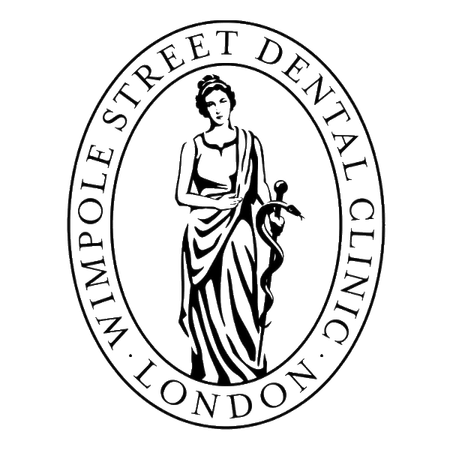The modern dental hygienist remit
Your dental hygienist is highly trained and experienced dental care professionals within their own specialism, tasked with delivering the highest standards of preventative care. This includes undertaking professional teeth cleaning – both routine and periodontal – for patients, both adults and children. They constantly update their skills at every opportunity via a regular schedule of continued professional development, just like every other member of the team here at Wimpole Street Dental Clinic.
The everyday role in clinic
Your dental hygienist employs the latest techniques in professional teeth cleaning such as specialist Air-Flow® therapy, offers their professional advice on avoiding tooth decay and preventing gum disease and shares their top tips on optimising your oral hygiene routine at home plus advises on pre and post treatment care including nutritional recommendations, too.
The career pathway
Your dental hygienist is likely to have trained at University or College to become qualified as a dental nurse before specialising in dental hygiene with further accreditation from a two-year fulk time course approved by the General Dental Council (GDC). Just like your dentist, your dental hygienist prioritises saving teeth as the optimum clinical outcome for every patient.
Why there is nothing like a professional teeth cleaning
An expert examination of your teeth and gums means that a meticulous care plan can be created for you by your dental hygienist in consultation with your dentist. You may need a bespoke schedule of cleanings – in between your normal booked routine visits – which can restore and keep your oral health to a standard which is just not possible to achieve by yourself at home. Not only is your dental hygienist highly trained, but they also have access to specialist tools coupled with the latest developments in technology.
Professional teeth cleaning is the most effective and safest method to maintain both healthy and beautiful teeth for life, preventing gum disease very effectively, too. Our investment in EMS Air-flow® technology means that we can comfortably remove plaque (even from hard-to-reach areas) plus any tooth discolourations without requiring another teeth whitening method to follow and without harsh abrasion. We professionally clean both natural teeth and any dental restoration you may have in place.
How to clean your own teeth like a hygienist – our guide
Your dental hygienist would encourage you to commit to an optimised oral hygiene routine at home, just as you commit to attending regular check-ups here, in clinic. Our guidance for you to clean your own teeth like a hygienist, is to adopt this committed mindset.
1. Brush your teeth twice a day
It is important to brush your teeth at least twice a day and for at least two minutes each time. Try brushing before breakfast and last thing at night before you go to sleep to reduce the multiplication of bacteria, remove any remaining food debris, promote the production of saliva and neutralise any food acids before and after you eat during the day.
2. Consider the benefits of an electric toothbrush
You can choose to use a manual or an electric toothbrush, the choice is yours but the rotating or oscillating head on an electric one does remove plaque more effectively and with less manual effort.
3. Change your brushes regularly – both manual and electric
The bristle bed of your toothbrush will wear out so commit to changing the head (electric) or replacing the brush (manual) on a very regular basis – every three months (12 weeks) during the year.
4. Use dental floss or a set of interdental brushes
Know that brushing your teeth twice daily is simply not enough to adequately prevent the onset of a host of oral health issues – not just tooth decay and gum disease, but abscess, infection and even bad breath. Floss or use a set of interdental brushes to clean the harder to reach areas between your teeth – on the gumline – to ensure you really do maintain a cleaner and healthier mouth between check-ups.
5. Choose a fluoride toothpaste
Fluoride toothpaste is a highly effective product to use at home to prevent tooth decay. It acts to rebuild (remineralise) weakened tooth enamel and slows down bacteria and food acids in the formation of plaque.
6. Check your toothbrushing technique
When you attend your next dental hygienist appointment, ask your expert to demonstrate the best toothbrushing technique. Remember to place your brush at a 45 degree angle to your gums and teeth, aiming for gentle strokes on each surface of the tooth at a time – the outer, the inner and the chewing surfaces, in turn. Do not brush too hard as you may accidentally brush your gums excessively initiating gum recession.
7. Maintain a healthy, balanced diet
Sugary foods and drinks like soda offer the food source to the bacteria present in your mouth which causes tooth decay and gum disease. Sticky, sugary foods can also stick to your teeth longer and drinks like soda can coat your teeth in sugary residue, breaking down the enamel at their leisure. Preserve your newly restored smile by reducing or omitting these from your diet. The best thing you can do instead, is drink water to reduce the amount of harmful bacteria in the mouth, during the day.
8. Stop smoking
Tobacco when smoked releases many chemicals into the bloodstream and reduces the diameter of the blood vessels, which in turn hampers the body’s ability to heal fully and fast and to remain in optimum condition in order to ward off gum infection or inflammation, which if left unchecked, leads to tooth decay and gum disease and eventually tooth loss.
Remember the key principle to this guide is commitment.
Commit to cleaning your own teeth at home just like your dental hygienist would if they were you.
If you would like further information on optimising your oral hygiene at home step by step with professional advice on the best products to use, contact us, today.

